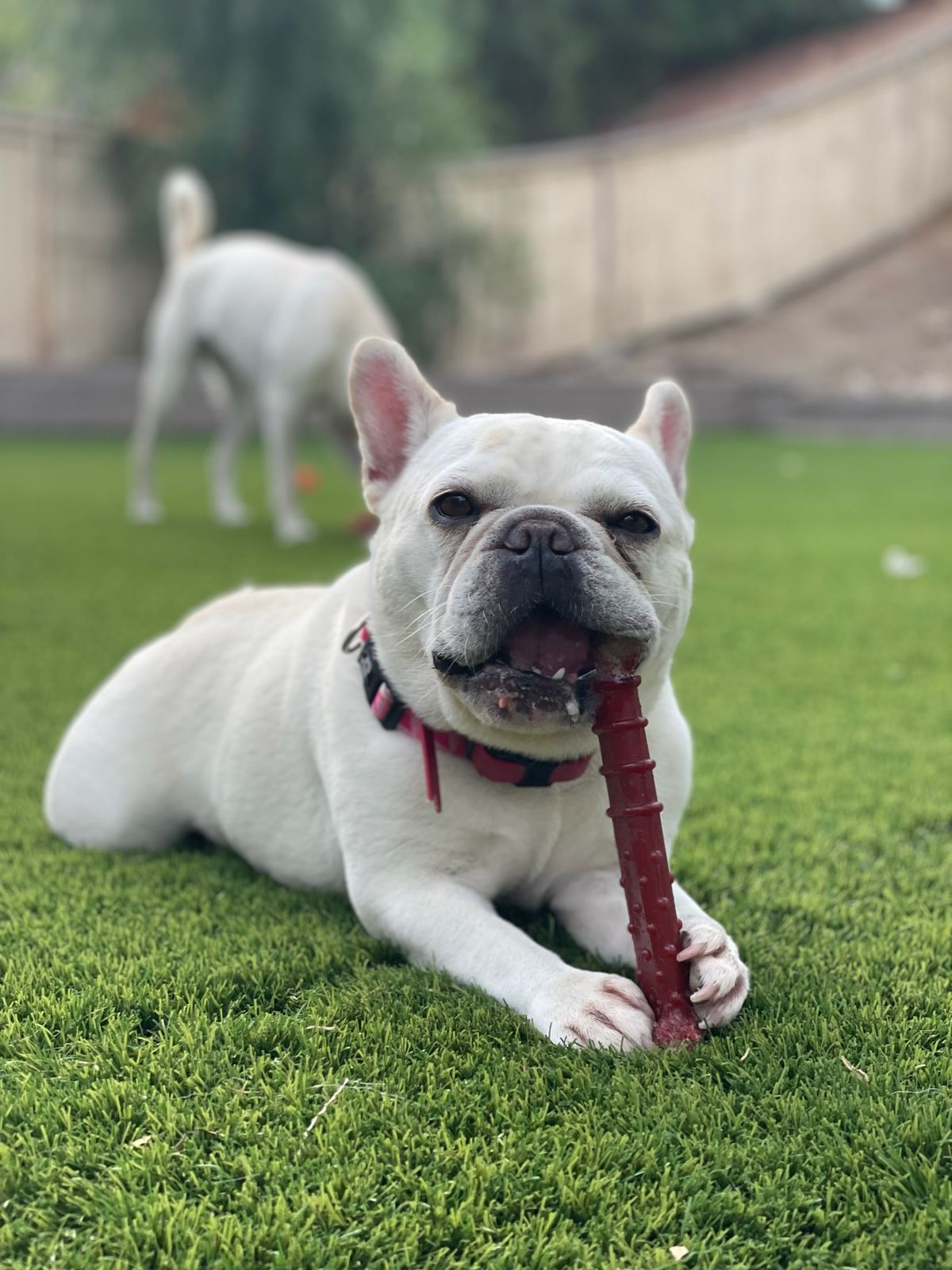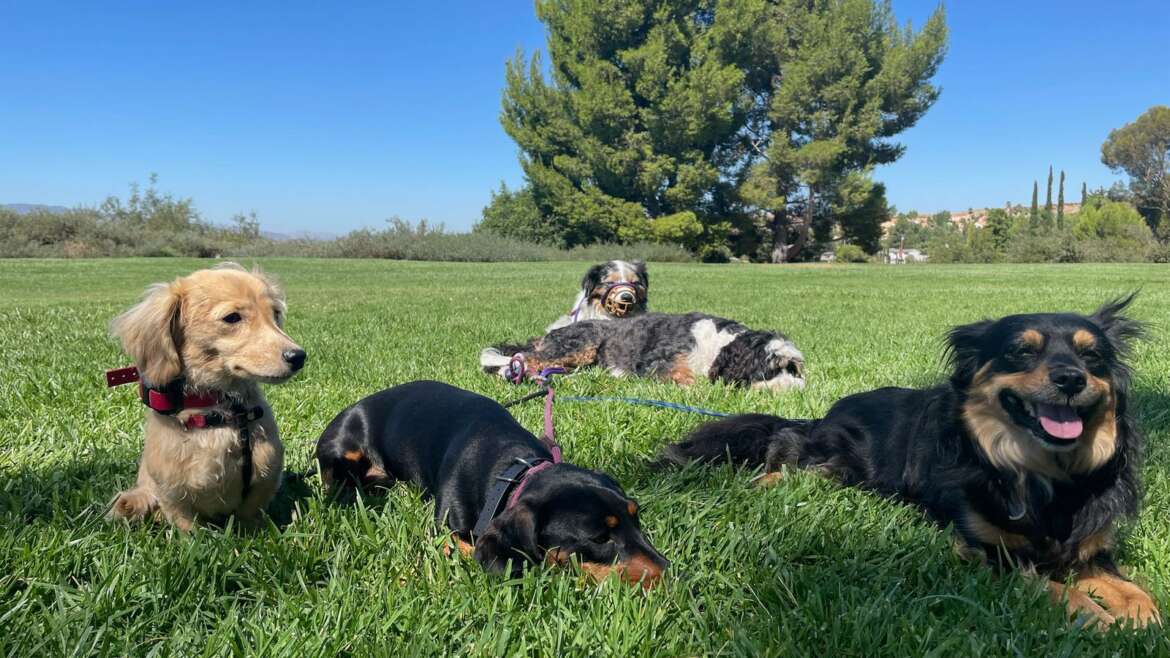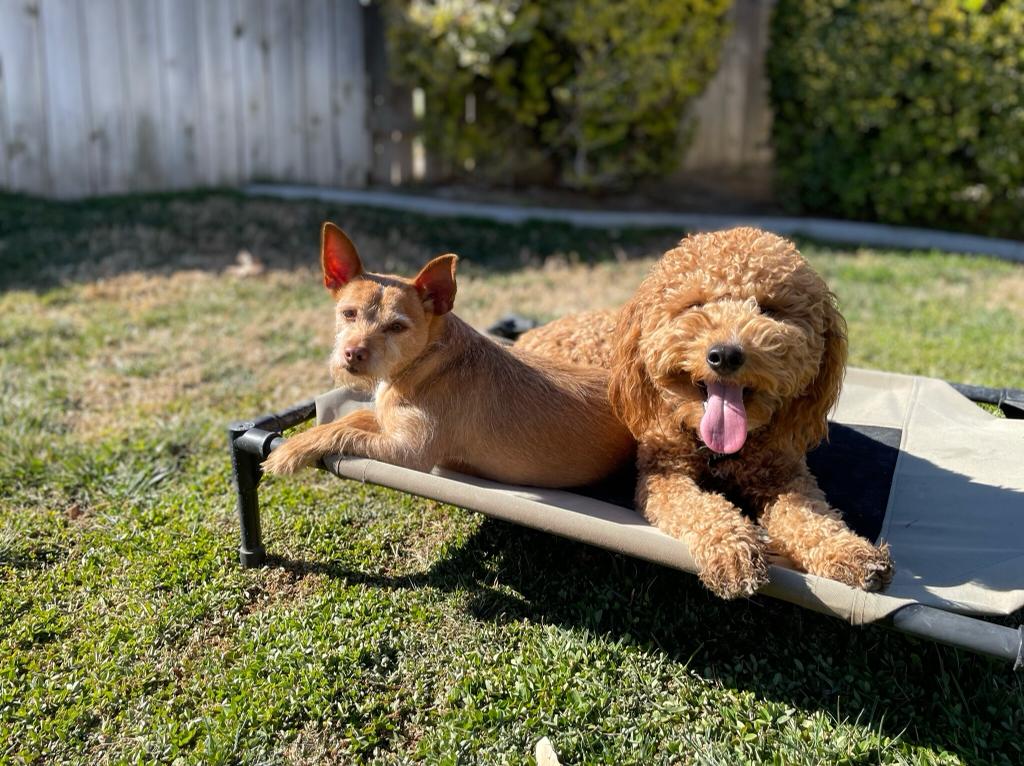One of the most beautiful things about raising a dog is experiencing the growth both physical and psychological that they go through. We can all agree that (for most dogs at least) the puppy behaviors change rather quickly and sometimes your dog’s behavior will be stable for months and then all of a sudden changes start to happen. That (leaving any medical issues aside) is called development. Changes are going to happen in your dog’s behavior because they are maturing and evolving. The best thing one can do is be cognizant of that and work to mold and teach a dog where they are at. If you try to teach a 4 month old pup the same way you teach a 4 year old dog, you will surely get frustrated and the dog in both instances will get confused. A four month old pup is very similar to a developing baby: their attention span is minuscule and their stamina is tiny. While a four year human and dog (even though they are in different stages developmentally) will learn much quicker and last a lot longer during lessons. Hence why being fair to the stages of development both in humans and in dogs is something that one should always have in mind if their aim is to connect and eventually teach. Here is a brief explanation of a dog’s psychological development. It is by no means an end all explanation on why sometimes your dog’s behavior will “suddenly” change, but it might bring some insights when you are experiencing behavior alterations with your pup.
When dealing with young puppy behaviors it is important to always remember that they go through a follow – play – explore phase in their development. All young puppies (3 through roughly to 5 moths) practice a lot of following and playing with their pack. This is the stage where they learn to follow their pack. These young dogs instinctually know that following the pack will not only provide safety, but will be how they learn to navigate the world around them. Hence why most young pups will follow you everywhere. This is usually the reason why most first time dog owners believe that their dog is perfect and do not provide any teaching during these crucial young developmental stages. If your young pup follows you everywhere, start teaching them to stay in a place and not do so. In the wild that is what most canines do. When mothers can finally leave and go hunting, they “expect” their young to stay in the den. To not follow, which would be detrimental to the life expectancy of a very young pup. One of the best exercises one can practice at this stage is to ask their young pup to stay in a bed (or crate) and not follow. These are the beginning stages of us humans teaching our personal dogs that they will not follow us everywhere. That they re ok with staying by themselves.

Another important milestone is that around 4 months puppies will start teething (meaning they will start loosing their baby teeth and replace esteem with adult teeth). I often joke with new dog owners that they will hate their dogs twice in their lives: when they are teething and when they become teenagers. When puppies are in the process of loosing their baby teeth they will try to bite anything and everything around them – this is completely normal. The best thing an owner can do is provide the pups with plenty of toys to chew on. But also making sure they make the distinction (by training) what is ok to chew on and what is not. This stage is when a lot of people are surprised that their once “perfect” puppy is chewing on their favorite shoes. Providing more structure during this stage is crucial since this is part of a puppy’s development. If one is not paying attention to their young dog, they should be placed in a safe space, since this is where the explore stage will begin to show.
The explore stage is where a young dog starts to spread her wings, around 5 to around 8 months dogs go into an exploring spur. This is usually when new owners start to “complain” that their dog doesn’t listen to them. This is the exploration phase. Puppies usually feel more confident to go out and leave their pack through longer periods of time and through further distances. This is absolutely normal. It is part of a pup becoming a dog. But this is also a phase where a pup should be on a leash in case they decide to go exploring on their own. There is absolutely no need to make them wrong by doing so, but one should start to set clear boundaries of expectation since the dog is old enough to grasp that. Limiting the distances your young dog can go before turning back to you starts at this age.
The dreaded teenage phase starts as early as 8 moths and can go as long as 2.5 years old. This is where a dog will start pushing boundaries. In a pack this is where they would establish who they really are. What role will they play in the pack will start being defined at this stage of development. A lot of owners have a hard time with their dogs during their teenage years. I guess as well as many human parents do with their teenage progeny. Boundaries will be pushed and limits will be tried. Taking deep breaths and surrendering to this stage of development the young dog is in will help tremendously. But also keeping the boundaries and expectations that were set up to this point will be crucial in raising a well rounded and balanced dog. This is usually the time that many owners will scratch their heads and think that something is wrong with their dog. Personally I get a lot of clients in this stage of development with their dogs, simply because they do not have the time and expertise to dedicate to (sometimes) a more “energetic” teenage dog. Reaching out to a professional if you are having a hard time during this transition, is really beneficial in assisting with the ups and downs that this period of a dogs life will bring.
At around 3 years of age most dogs will have matured to a more “stable” set of behaviors. Of course none of these times are set in stone. Very much like us, dogs have personalities and the variations will occur, depending on nurture but as well as the nature of the dog. What I always advise is that raising a dog is not a sprint; it is a marathon. Both species evolving together and becoming a fuller version of themselves. Just as we can not expect two individuals to have have the same trajectory in course of maturing, one should not expect that from a dog. These stages are a rough outline of a dog’s development, not a blue print. That comes with us humans making sure we have taught our young pups, so when these right of passages come to pass we, and our dogs, are ready to go through them with as much ease and grace that we can muster.
Happy training!



